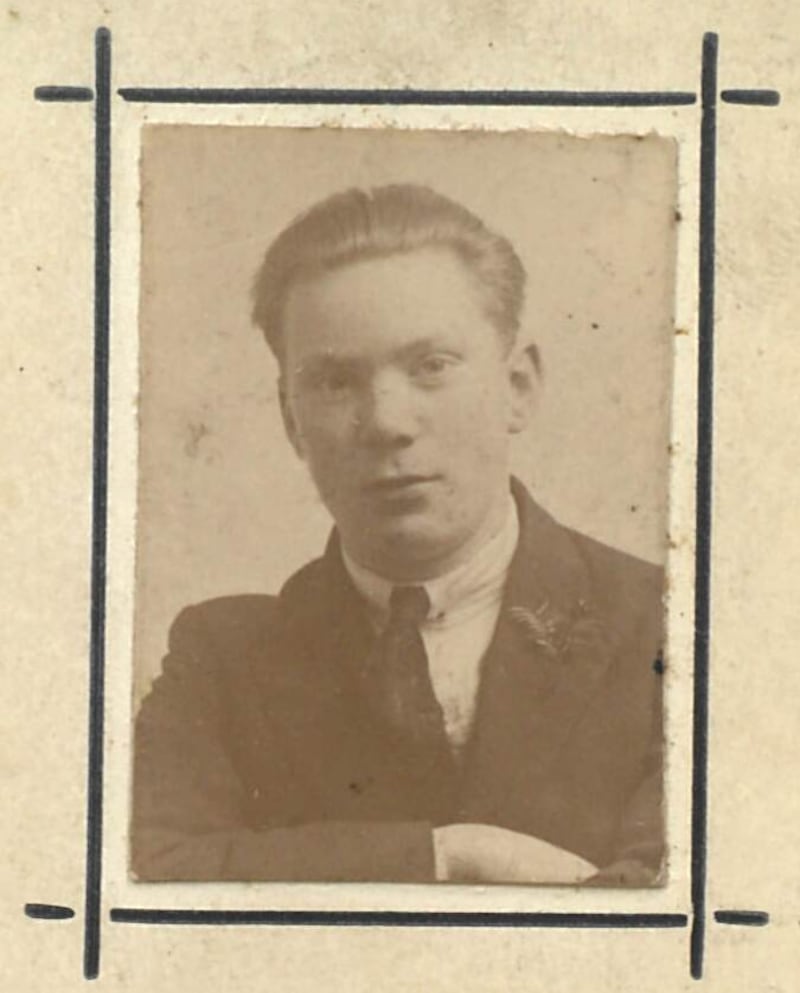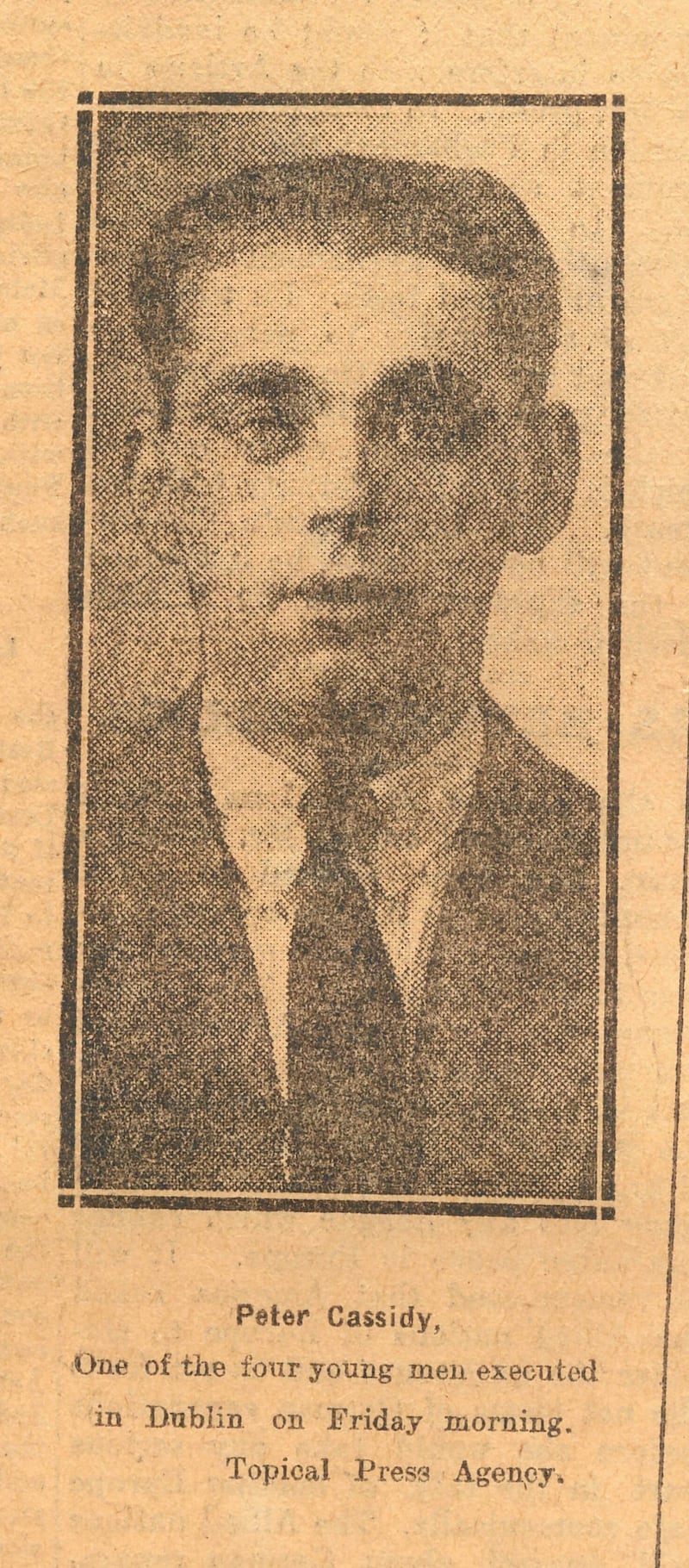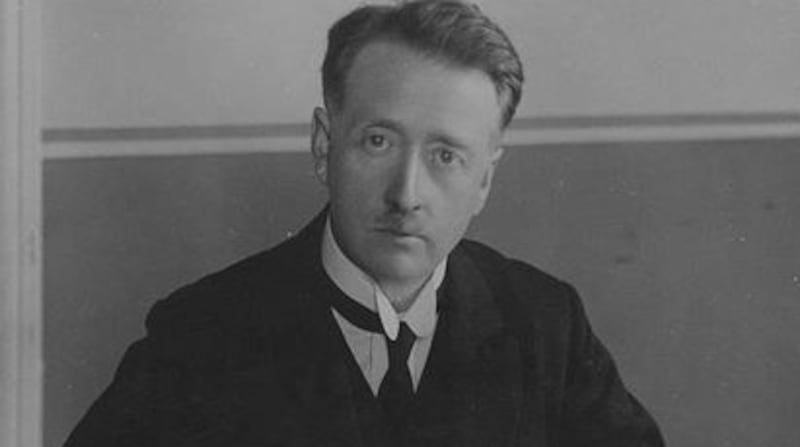In Kilmainham Gaol near the archway to the Stone Breakers’ Yard, where the leaders of the Easter Rising were executed, is a plaque which many visitors do not notice. It remembers four men who were executed in what was formerly the women’s exercise yard, on November 17th, 1922 – James Fisher (18), Richard Twohig (19), John Gaffney (19) and Peter Cassidy (21).
[ Read the complete Century: 1923 Birth of a Nation seriesOpens in new window ]
They were barely adults when they faced the firing squad at 7am that morning – the first executions of the Civil War. It was thought better to execute them together than apart.
The National Army company selected to do the shooting did not do a good job. They had no experience of this grisly business and many were assured their rifles were loaded with blanks so they might believe they were not the ones to fire the fatal shots. Cassidy had to be finished off with a coup de grâce to the head.



In the five years between the Easter Rising and the end of the War of Independence in 1921, the British executed 40 republicans. In the six months between November 1922 and the end of the Civil War in May 1923 the Irish government executed 81, 77 for political and four for criminal offences. The executed leaders of the Easter Rising have had streets, train stations and GAA grounds named after them. With the exception of Erskine Childers, hardly anybody remembers the others who were executed during the Civil War.
RM Block
The executions were a desperate response by the first Irish government to the ongoing violence of the Civil War. They believed that only the most severe measures could stop the violence and preserve Ireland’s status as one of the world’s newest states.
In September 1922 the government introduced the Public Safety Emergency Powers Bill which made the carrying of unauthorised firearms an offence punishable by death. Childers, who had used his yacht the Asgard to smuggle guns into Ireland in July 1914 and had been a nationalist hero, was executed. He had been found with a small pistol that Michael Collins had given him as a present.
I am not going to hesitate if the country is to live, and if we have to exterminate ten thousand Republicans, the three million of our people is greater than this ten thousand
— WT Cosgrave
The government’s bloodlust surpassed anything that the British attempted. As quoted in Seán Enright’s book The Irish Civil War: Law, Execution and Atrocity, General Richard Mulcahy believed the executions were necessary to “stem the tide” of lawlessness.
The State’s first leader, effectively Taoiseach, WT Cosgrave declared: “I am not going to hesitate if the country is to live, and if we have to exterminate 10,000 republicans, the three million of our people is greater than this 10,000.”
On December 6th, 1922 the Irish Free State came into being. A day later anti-Treaty forces shot dead a pro-Treaty TD Seán Hales in Dublin as a warning that those politicians who supported the executions would be killed. In response the Free State government executed four republican prisoners who had been in custody from the previous June – Rory O’Connor, Liam Mellows, Richard Barrett and Joe McKelvey. They were executed without even the pretence of a trial.

O’Connor had been best man at the wedding of the Minister for Justice Kevin O’Higgins just a year previously. Now O’Higgins was authorising the execution without trial of his best man and best friend.
The leader of the opposition, the Labour Party leader Tom Johnson, said the new government had almost killed the State at its birth.
“It was hoped that the course of law would be in operation henceforth. It was hoped that there would be some rehabilitation of the idea of law; and almost the first act is utterly to destroy in the public mind the association of the government with the idea of law,” he told Dáil Éireann.
In December 1923 James O’Connor (23), a great-uncle of Sinn Féin president Mary Lou McDonald, was executed by firing squad along with six other men in Curragh camp. The executions accelerated in 1923. There were 34 in January 1923, one in February, 11 in March, 12 in April and two in May after the war ended. On one day alone, January 20th, 11 men were executed at three separate locations. The men involved were subject to military courts, many were offered no defence and in some cases their relatives were only told afterwards.
Along with 81 men who were officially executed, dozens more were killed by the National Army without any legal process. In Co Kerry, as we will see elsewhere, 17 republican prisons were effectively executed by being tied to landmines and blown up. Another republican prisoner was taken to a wood and shot dead.
The anti-Treaty side responded by targeting the homes of pro-Treaty politicians. Two days after the execution of the four men in Kilmainham Gaol without trial, the anti-Treaty side burned down the home of TD Seán McGarry, killing his seven-year-old son. Kevin O’Higgins’s father was shot dead in February 1923 at his home in Co Laois. WT Cosgrave’s family home was burned out and his uncle killed in a raid on a shop. The anti-Treaty side also burned 199 homes during the Civil War.

The executions which took place cast the darkest of shadows. In 1948 the then Fine Gael leader Richard Mulcahy had to step away from the office of taoiseach as the smaller coalition party, Clann na Poblachta, would not serve with him because of his role in the State-sanctioned killings. Twenty-five years on, many people were neither prepared to forgive nor forget.
In the classroom: ‘No streets named after them’
“The executed leaders of the Easter Rising have had streets, train stations and GAA grounds named after them. With the exception of Erskine Childers, hardly anybody remembers the others who were executed during the Civil War,” writes Ronan McCreevy.
– Why do you think this is? Is there a public amnesia or omertà when it comes to the Civil War? Do you think the Decade of Centaries programme has changed this?




















